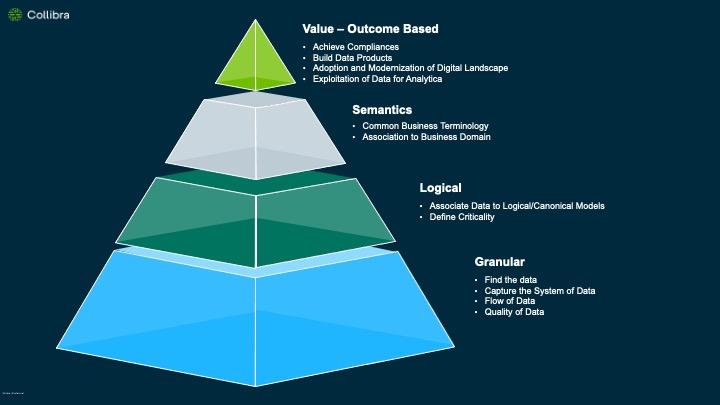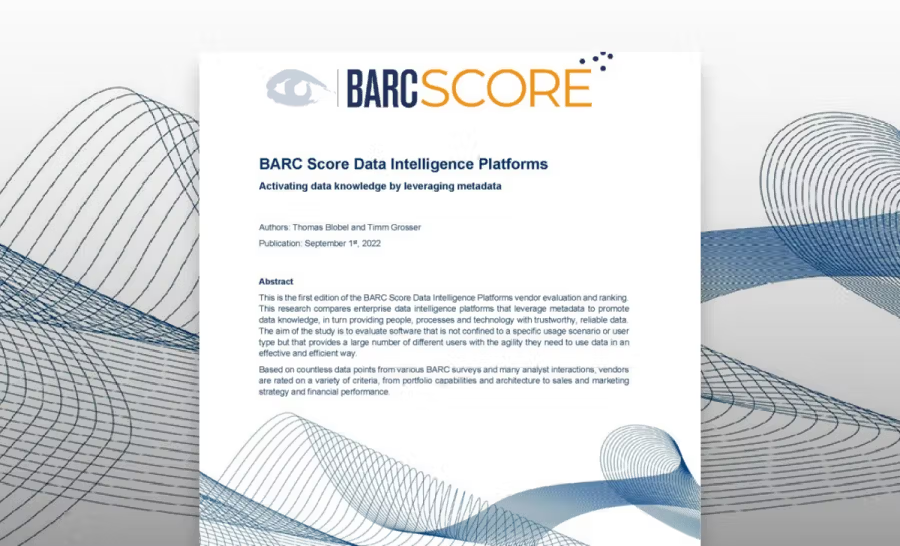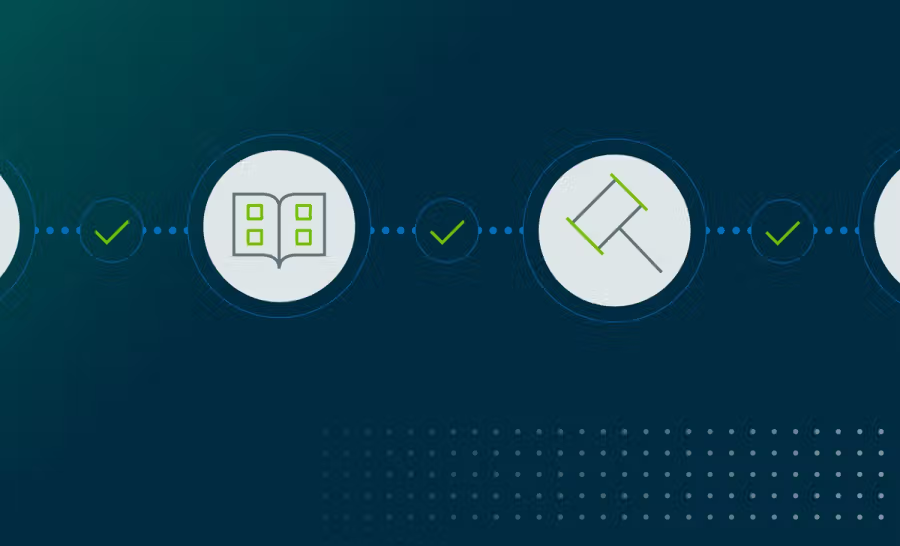The 8 aspects and 4 layers of data intelligence you must know

The information deluge has become a tsunami. Now, more than ever, there’s a huge amount of data available to businesses. Indeed, consumers alone generate 2.5 quintillion bytes of data every day.
Yes, we have more information than ever before. But this abundance can be overwhelming. If your organization wants to take full advantage of it, it first needs to make sense of it.
You need data intelligence.
To give you more insight into creating an intelligent data platform, I want to unpack what constitutes data intelligence.
I believe it all comes down to the eight aspects and four layers of data intelligence.
Let me explain.
Think of data as an asset
Over the past decade, businesses of all sizes have come to understand that data is a fundamental asset.
We’ve seen a dramatic shift in the way data is managed and used across enterprises. Indeed, data has gone from a supporting function to a strategic imperative.
The driving forces behind this transformation include the demand for business agility, and the demand for data to enhance value through operational change, automation, and optimization.
A laser focus on extracting more value from data has pushed forward initiatives, such as data governance, data quality, and data management in general. Yet in spite of this knowledge, many organizations struggle with a clear vision for their data initiatives.
Often, the arrival of a new CDO or CIO will initiate an organization’s journey to make data a strategic imperative. Leaders will understand that there are three foundational pillars around data intelligence that no organization can do without. They include the ability to:
- Find your data
- Understand your data
- Trust your data
So when you have data intelligence, what do you really have?
The 8 aspects of data intelligence
When you’re building a data-driven organization that makes decisions based on trusted data, then you’re achieving these eight critical aspects of data intelligence.
- Centralized data repository
- Data provenance
- Technical lineage
- Data quality
- Logical model
- Criticality
- Contextual
- Conceptual
Each one of these aspects of data intelligence highlights a specific view of your data — and an understanding of this framework will help you identify where you need the most focus.
Now, let’s dive a little deeper into each of the eight aspects:
- Centralized Data Repository (or Data catalog): Right now, your data resides across a wide variety of sources in a siloed operational infrastructure where finding relevant data is a challenge. Data is stored in various forms such as files, databases, cloud, data lakes, reports, and data warehouses. Data-driven organizations, however, use a centralized repository to capture the structure and metadata of data and allow it to be searched. The centralized repository is commonly known as a data catalog.
- Data Provenance: Enterprises build data warehouses, data marts, and data lakes for business reporting and analytics initiatives, and each of these require data pipelines. As data hops across the various systems, it becomes essential to identify where data originates.
- Technical Lineage: Data hops transform data. As technology advances and the modernization of data accelerates, enterprises must capture the minute details of transformations to understand dependencies, impacts, and risks.
- Data Quality: Your data catalog houses vast amounts of metadata, structural data, and systems’ information. However, it’s also essential to understand data’s qualitative side. Data quality profiling provides the statistics around the data — and that helps inspire confidence and trust in your data. And that helps drive better decision-making.
- Logical Model: To operate business processes with an understanding of ownership across lines of businesses, there must be a focused approach, especially around data. The logical model enhances the value and efficiency of your data and data usage.
- Criticality: Your data catalog grows over time as more metadata is captured. But you want to make sure you’re building your catalog on relevant information that’s important to your business. Data criticality defines such parameters, and that helps identify the relevant critical data for efficient business operations.
- Contextual: Once data is collected in your data catalog, associating the various data points with the appropriate context is essential. Contextualisation enriches information by enhancing the meaning of the information presented to your analysts, business partners, and colleagues.
- Conceptual: Enterprises operate based on high-level, industry-agnostic business parameters such as customers, products, and more. Hence, the conceptual model provides a summarized, industry-specific overview that avoids the nuances of the specific enterprise implementation.
The 4 layers of data intelligence
If you look closely at recent trends, you’ll realize you can think of your data as existing on four layers.
- Granular
- Logical
- Semantic
- Value
With an understanding of these layers, you’ll know how to choose the correct aspect of data intelligence to focus on for your immediate data maturity needs.
Here’s a deeper dive into each layer:
- The Granular layer is described as the base of the data and is closer to the technology landscape. It can be described as the:
- Ability for the data to be found
- Ability to capture the system of the data
- Ability to understand flow of data
- Ability to understand the quality of data
- The Logical layer is one of the most important intermediate layers and usually is not able to catch up with their physical counterparts. This is the layer which provides information to the raw data captured at granular level. This layer also helps by allowing enterprises to define the data criticality, including:
- Ability to associate Logical/Canonical models
- Ability to define Criticality
- The Semantic layer deals with the contextual and conceptual layer of the enterprise. It not only provides contextual information of the data but also provides domains around it, including:
- Ability to have common business terminology
- Ability to associate to business domain
Once your enterprise has adopted these three lasers, it’s important to identify the responsibilities for each one.
- The Granular layer carries responsibilities for roles with technical profiles, including data engineers, system owners, and data analysts.
- The Logical layer focuses on the architectural decisions and understanding business criticality, and the roles involved in this work include business analysts and data architects.
- The Semantic layer focuses on the business meaning and helps understand the data context. As a result, this layer entails responsibilities for business SMEs and other stakeholders to understand specific business processes within specific business units.
The fourth, final layer is the Value layer.
The Value layer is outcome-based. It utilizes the other layers of data to deliver business value and help make informed decisions. It is the topmost layer in the information chain and factors in the following activities:
- Achieving compliances
- Building data products
- Adopting and modernizing the digital landscape
- Exploiting data for analytics
Collectively, an understanding informed by an application of these four layers will give you a clearer picture of the roadmap you need to build to get to greater data intelligence.
These layers are akin to the DIKW pyramid structure, which describes the relationship between Data, Information, Knowledge, and Wisdom.

And like DIKW, they’re a helpful lens to orient yourself on your journey as well as an insightful method for managing your roadmap.
Get smart about data intelligence
Data is a vital part of your business and is increasingly central to your business decisions. So it’s critical that your organization leverages data intelligently.
But you can’t create a foundation of data intelligence without understanding what it looks like. Remember these eight aspects and four layers of data intelligence as you continue on your journey.
With a best-in-class catalog, flexible governance, continuous quality, and built-in privacy, the Collibra Data Intelligence Cloud is your single system of engagement for data. Discover, understand, and classify the data that matters to generate insights that drive business value.
In this post:
Related articles

Data IntelligenceJanuary 27, 2022
Accelerate IFRS-17 Compliance with Data Intelligence Platform

Data IntelligenceSeptember 27, 2022
Collibra is a Market Leader in first-ever BARC Data Intelligence Platform Vendor Evaluation

Data IntelligenceOctober 28, 2022
The must-have checklist for maximizing the value of your data catalog and governance investments with Collibra

Data IntelligenceMarch 10, 2022
Improve data literacy and data sharing in government
Keep up with the latest from Collibra
I would like to get updates about the latest Collibra content, events and more.
Thanks for signing up
You'll begin receiving educational materials and invitations to network with our community soon.
